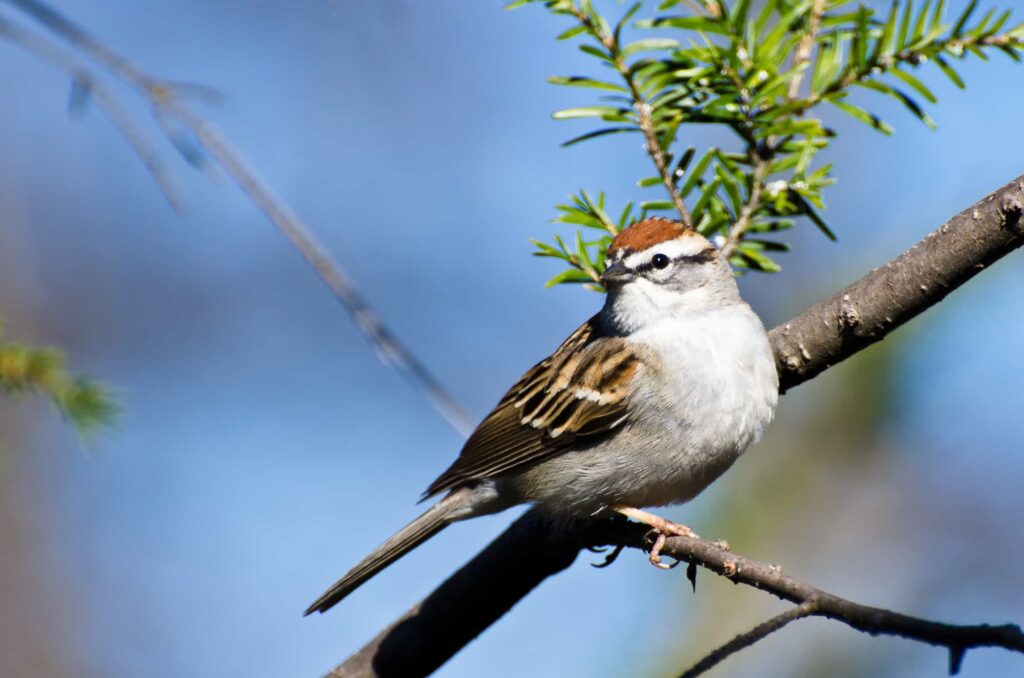As a big, maritime state with a diverse selection of habitats, California is a mecca for birdlife. Over 660 different bird species have been recorded here, and more than twenty of them are sparrows.
So whether you’re walking the coastline or up in the mountains, immersed in the redwood forests, or out in the desert, you’re bound to be kept company by some of these cheerful ‘little brown jobs’.
Let’s take a closer look at the sparrows of California and tease out some of the details that make them such a fascinating family of birds.
The following sparrows are ordered approximately by how likely you are to see them, although, as you’ll soon learn, a lot depends on the time of the year and exactly where in the state you’re birdwatching!
California Towhee
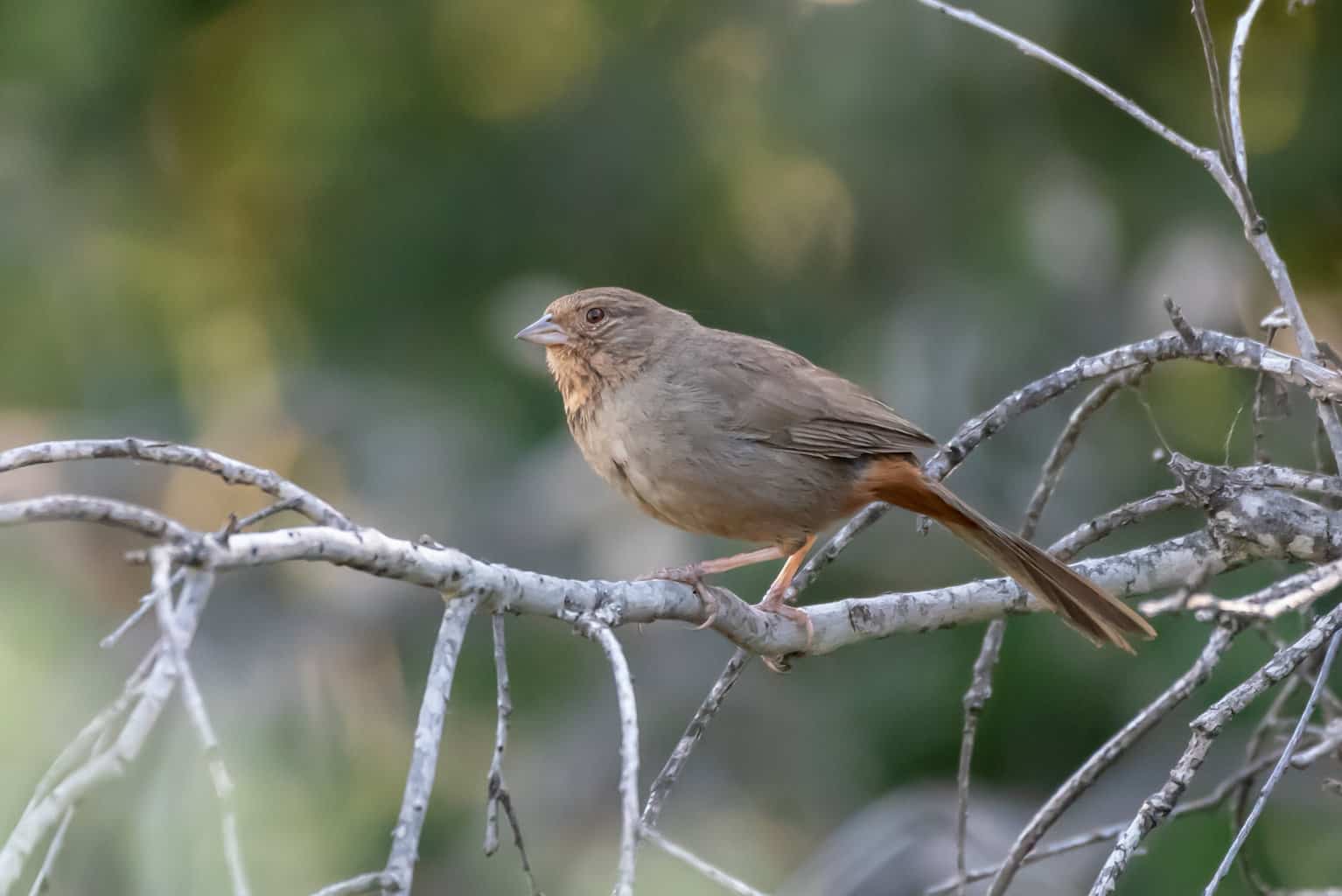
- Scientific Name: Melozone crissalis
- Length: 8.3-9.8 in
- Weight: 1.3-2.4 oz
- Wingspan: 11.4 in
Although you might not think of towhees as sparrows, they are a part of the large New World sparrow family, and so they’re an essential part of our list!
Since they’re named after the state, it shouldn’t be surprising that Californian Towhees are the most commonly seen sparrow in the golden state. These sedentary birds do not migrate and instead remain here to enjoy California’s mild climate year-round.
Much larger than the average sparrow, these medium-sized birds have a wingspan of nearly a foot across and can eat seeds as large as acorns!
Song Sparrow

- Scientific Name: Melospiza melodia
- Length: 4.7-6.7 in
- Weight: 0.4-1.9 oz
- Wingspan: 7.1-9.4 in
Song sparrows probably earned their name by singing the most persistently, rather than the most tunefully, but still, their lively, buzzing trills have the power to brighten up a gray day. Interestingly, scientists have discovered that the song sparrow’s repertoire changes when they’re in urban environments!
While a small proportion of the Californian population flies north for the breeding season, the majority of song sparrows remain in the state to enjoy the sunshine for the whole year.
Dark-eyed Junco
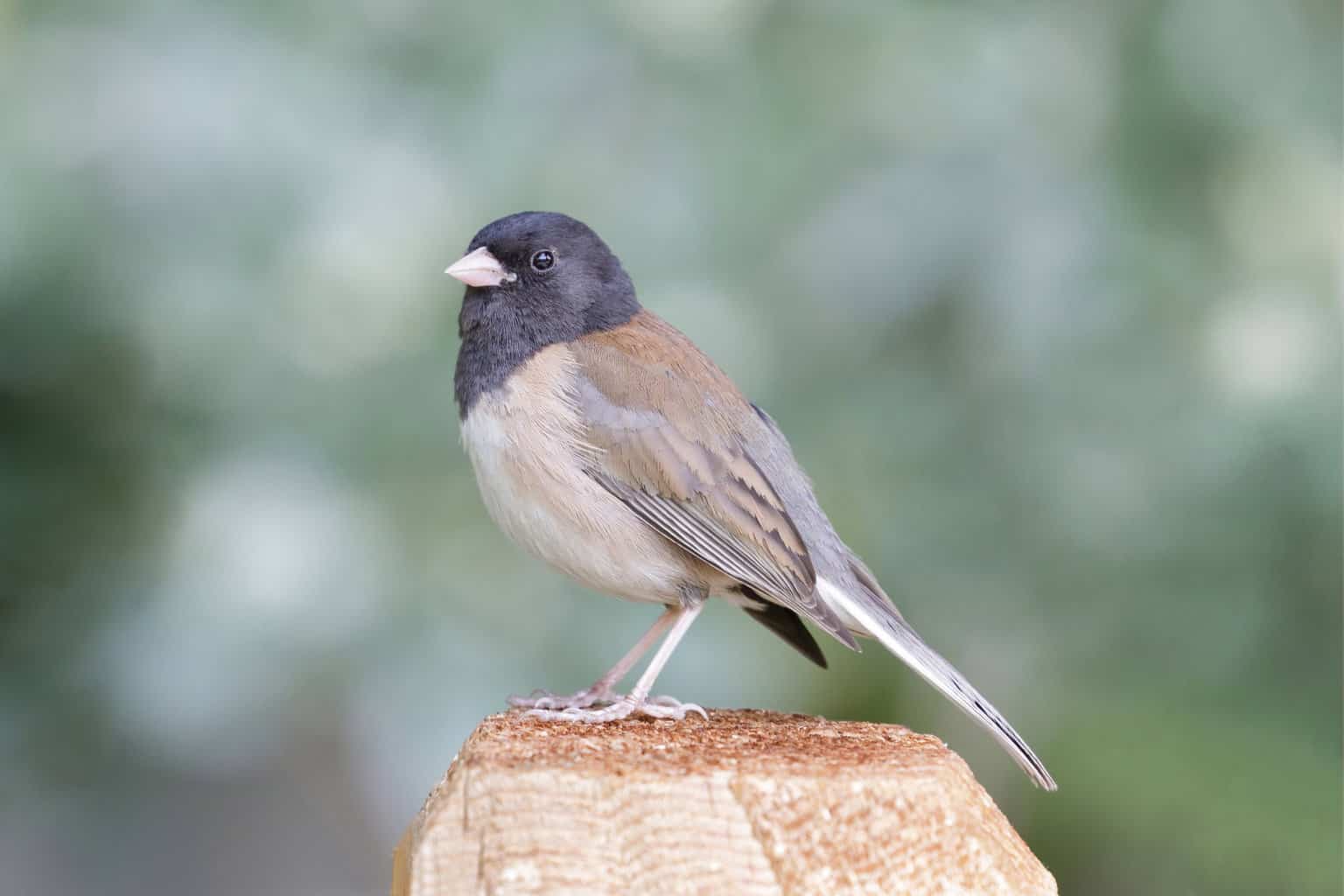
- Scientific Name: Junco hyemalis
- Length: 5.5-6.3 in
- Weight: 0.6-1.1 oz
- Wingspan: 7.1-9.8 in
Dark-eyed juncos are also part of the New World sparrow family and live in California year-round. You’re only slightly more likely to see them in the winter than in summer when some flocks of migratory birds return from more northerly breeding grounds.
Unlike the eastern subspecies, the dark-eyed juncos you’ll see in California will tend to be black, white, and brown rather than a slate gray color. These lively birds are a common sight at backyard feeders where they will relish peanuts, sunflower seeds, and other grains that are rich in fats.
Spotted Towhee
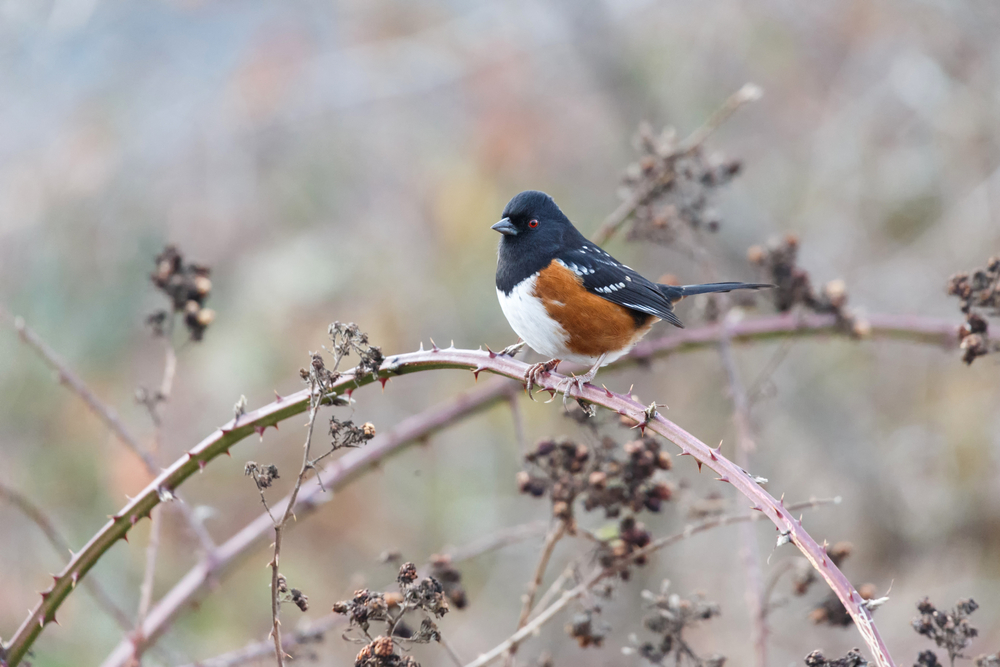
- Scientific Name: Pipilo maculatus
- Length: 6.7-8.3 in
- Weight: 1.2-1.7 oz
- Wingspan: 11.0 in
With their gorgeous sleek black heads, red eyes, and white spots on their wings and back, spotted towhees are one of the most elaborately decorated of all the New World sparrow family.
These common birds are a frequent sight around the year in California, although you’ll see a few more of them during the summer months when some flocks migrate from more central states to nest here.
Nest predation by birds such as Red-shouldered Hawks (Buteo lineatus) and Brown-headed Cowbirds (Molothrus ater) are one of the major causes of mortality for this otherwise successful bird.
House Sparrow
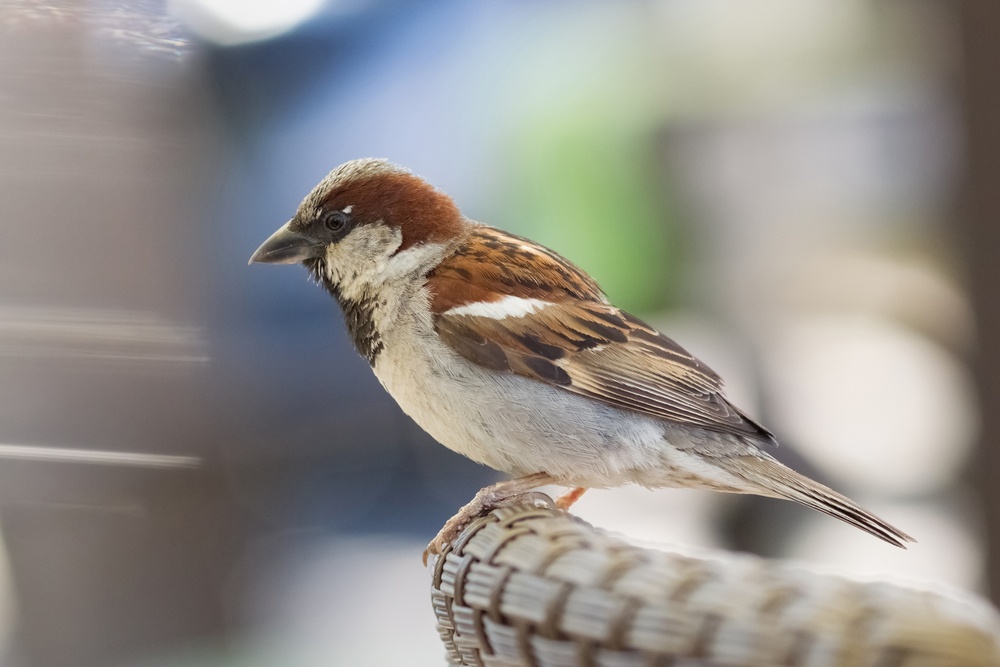
- Scientific Name: Passer domesticus
- Length: 5.9-6.7 in
- Weight: 0.9-1.1 oz
- Wingspan: 7.5-9.8 in
House sparrows are not native birds in California but were brought here by Europeans hundreds of years ago. They’re now some of the most common sparrows in North America.
Although their bright chirps are quite endearing, this little sparrow is very assertive and often dominates nesting sites that other birds would have taken.
House sparrows are a common sight at backyard bird feeders, where large flocks of them can decimate the food put out in a matter of minutes!
White-crowned Sparrow
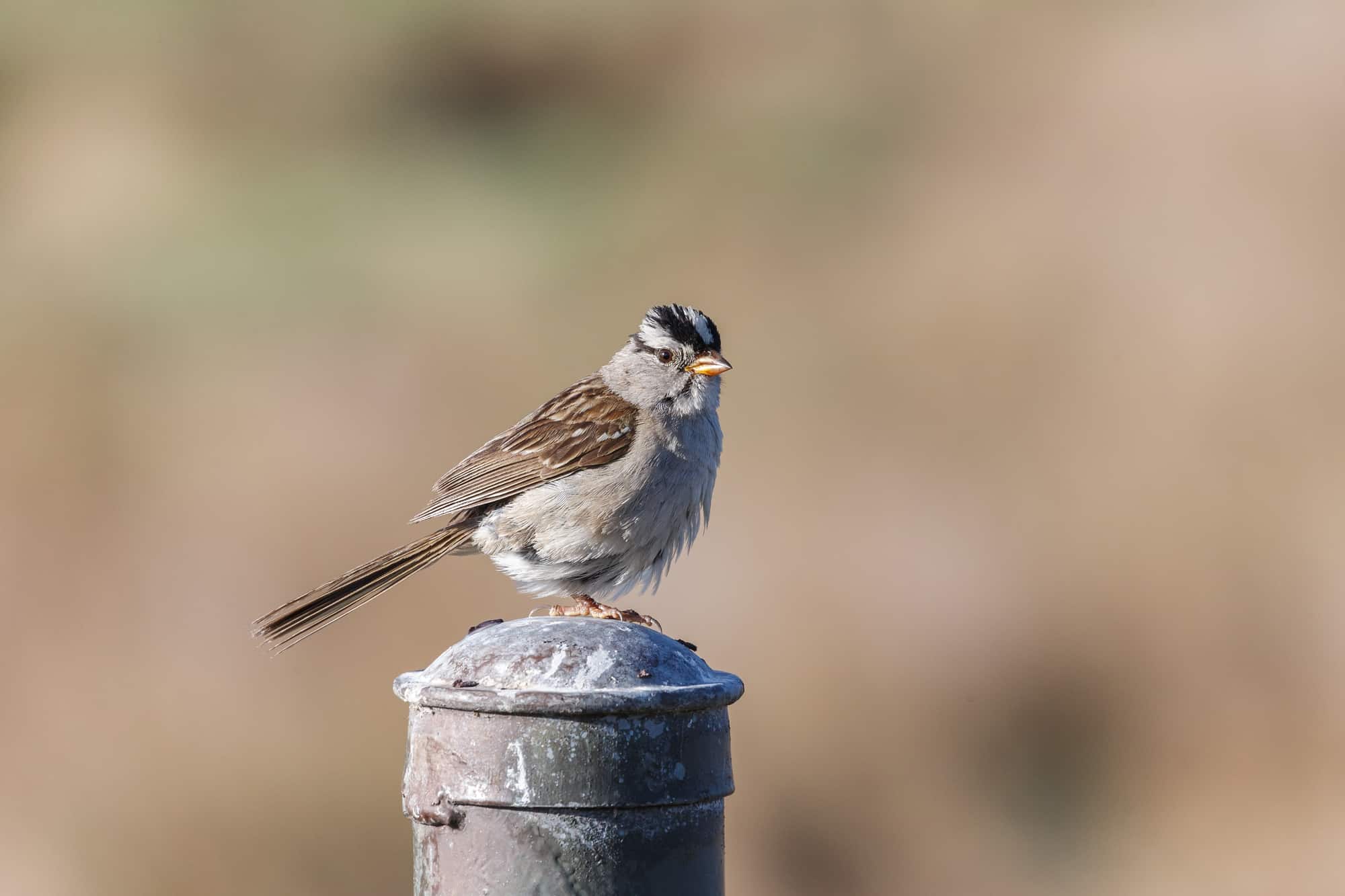
- Scientific Name: Zonotrichia leucophrys
- Length: 5.9-6.3 in
- Weight: 0.9-1.0 oz
- Wingspan: 8.3-9.4 in
White-crowned sparrows are not often spotted in California during the nesting season, but during the winter they are almost omnipresent – it’s difficult to avoid seeing them!
These distinctive birds are easy to recognize by their black and white striped heads and yellow beaks. Their sharp, chaotic whistles are also quite singular and easy to remember.
Golden-crowned Sparrow
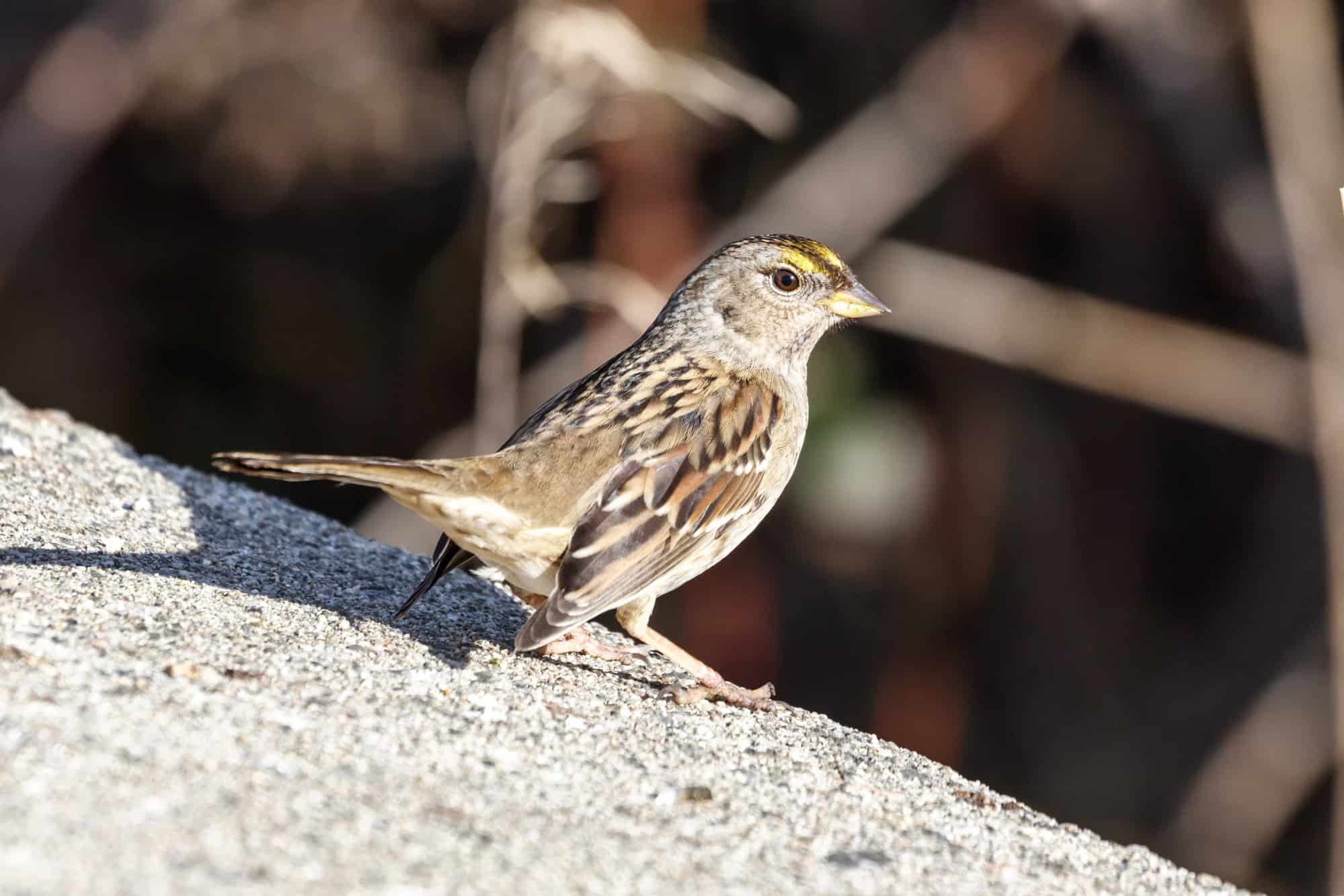
- Scientific Name: Zonotrichia atricapilla
- Length: 5.9-7.1 in
- Weight: 1.1-1.2 oz
- Wingspan: 9.74 inches
Golden-crowned sparrows are only present in the more eastern parts of California during the breeding season but arrive here en masse during the autumn when they return from their nesting grounds further north.
This means that most Californians will miss this bird’s breeding plumage when the yellow crown that it’s named after is especially bright and vivid.
Savannah Sparrow
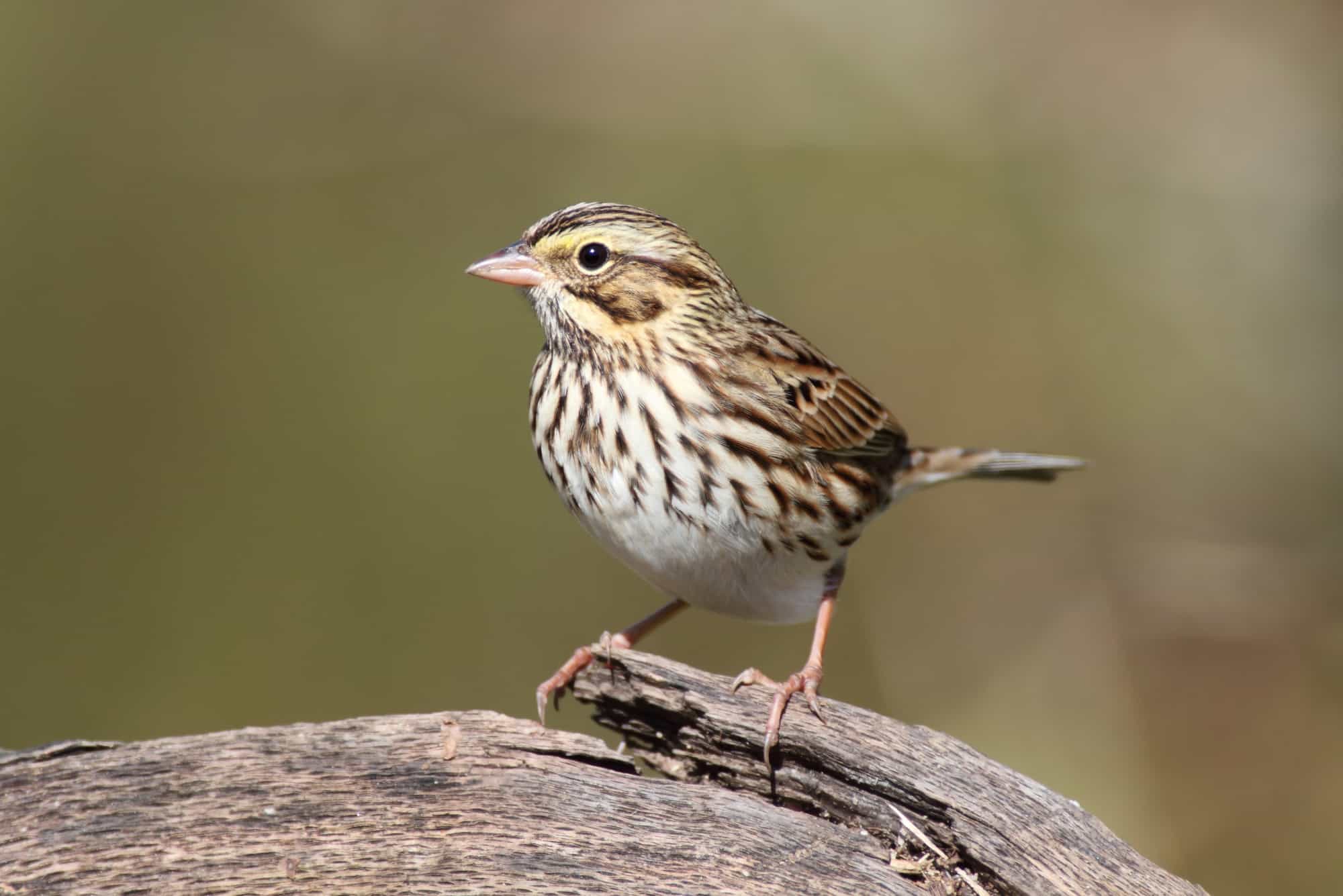
- Scientific Name: Passerculus sandwichensis
- Length: 4.3-5.9 in
- Weight: 0.5-1.0 oz
- Wingspan: 7.9-8.7 in
A few savannah sparrows can be spotted breeding in California during the summer months, but most of them breed further north, only returning here during the winter.
As their name suggests, these birds prefer life out on the meadows where they feed on insects and spiders. You’re less likely to see them around towns and cities than other sparrows.
Fox Sparrow

- Scientific Name: Passerella iliaca
- Length: 5.9-7.5 in
- Weight: 0.9-1.6 oz
- Wingspan: 10.5-11.4 in
Fox sparrows are a fairly rare sight in California during the breeding season when they tend to nest further north. They gather here in larger numbers during the winter.
This huge sparrow looks and behaves more like a thrush. You may see it kicking up leaves in the undergrowth in its search for food, and like a thrush, they also have a pleasant whistling song.
Lincoln’s Sparrow
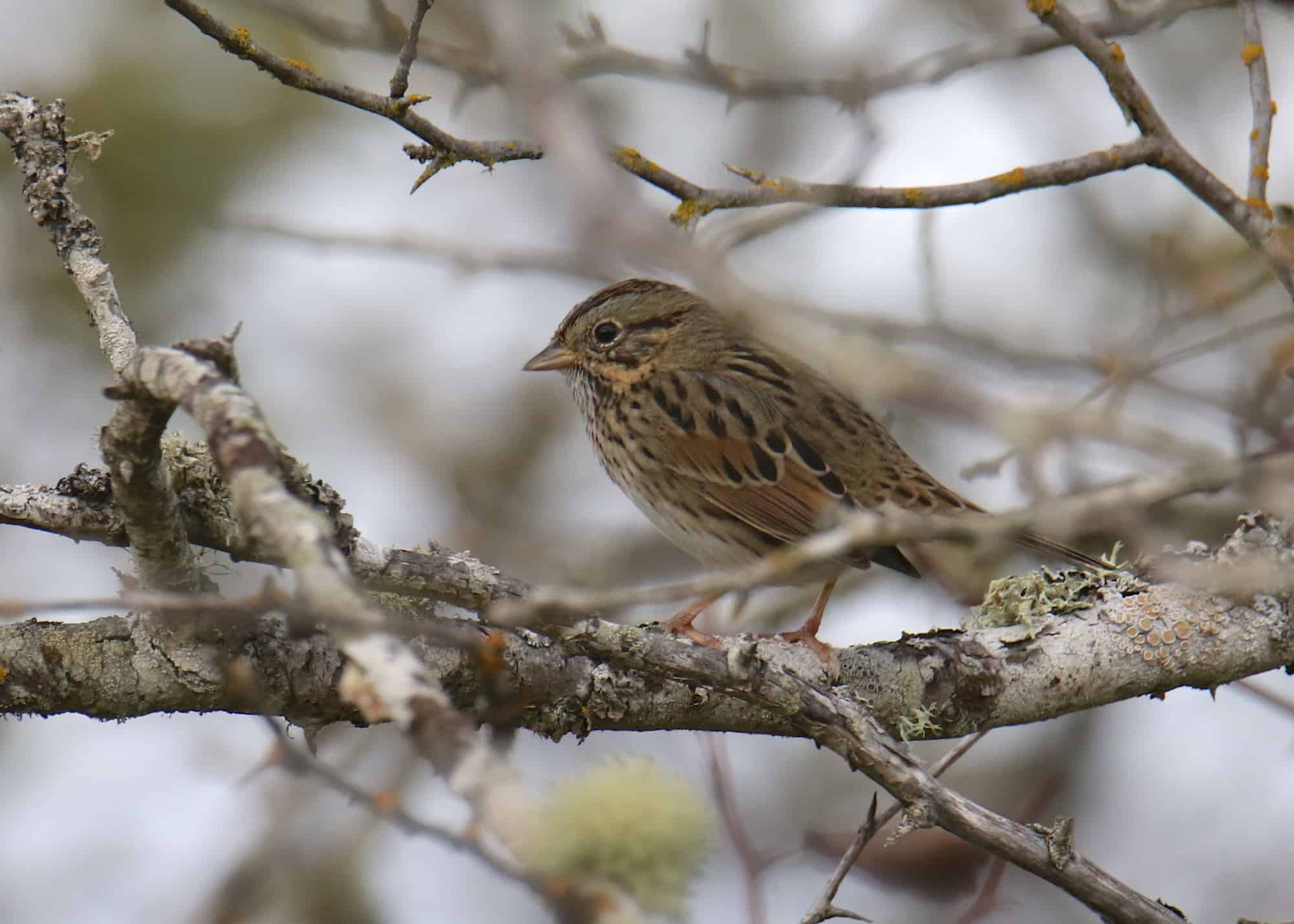
- Scientific Name: Melospiza lincolnii
- Length: 5.1-5.9 in
- Weight: 0.6-0.7 oz
- Wingspan: 7.5-8.7 in
Lincoln’s sparrow is a bird that likes to move around a lot. During the winter, you’ll only tend to find this sparrow in the western parts of California, but in summer they nest exclusively on the east side of the state.
Although difficult to identify by their plumage alone, these sparrows have a delightful song that serves as a great way to recognize them once you know it.
Lark Sparrow
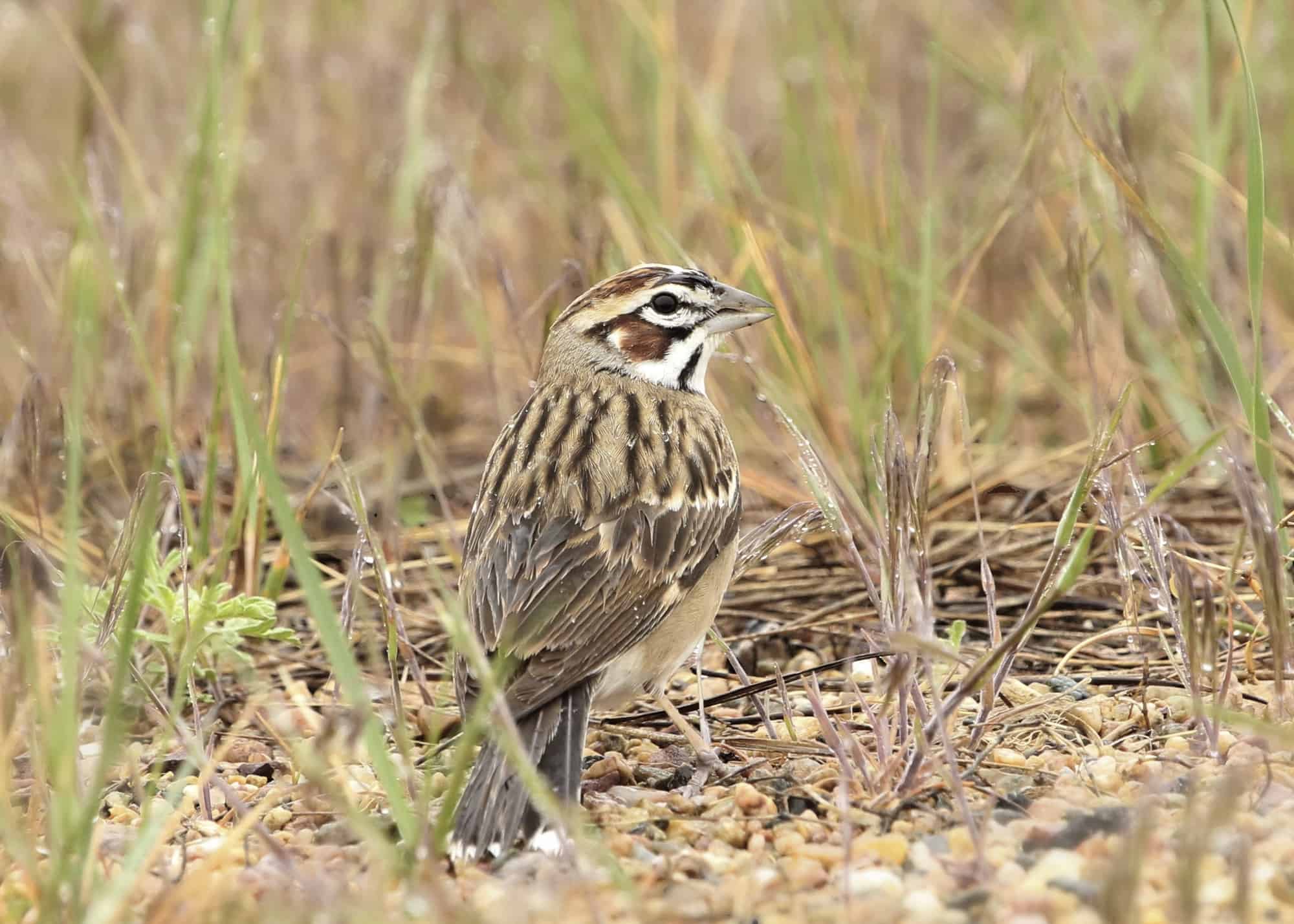
- Scientific Name: Chondestes grammacus
- Length: 5.9-6.7 in
- Weight: 0.8-1.2 oz
- Wingspan: 11.0 in
Although most lark sparrows prefer to spend their winters in Central America, California is one of the few states where they remain all year.
Preferring open grasslands with scattered trees and shrubs, you’re less likely to see this larger sparrow at your bird feeder than many of the other species.
Chipping Sparrow
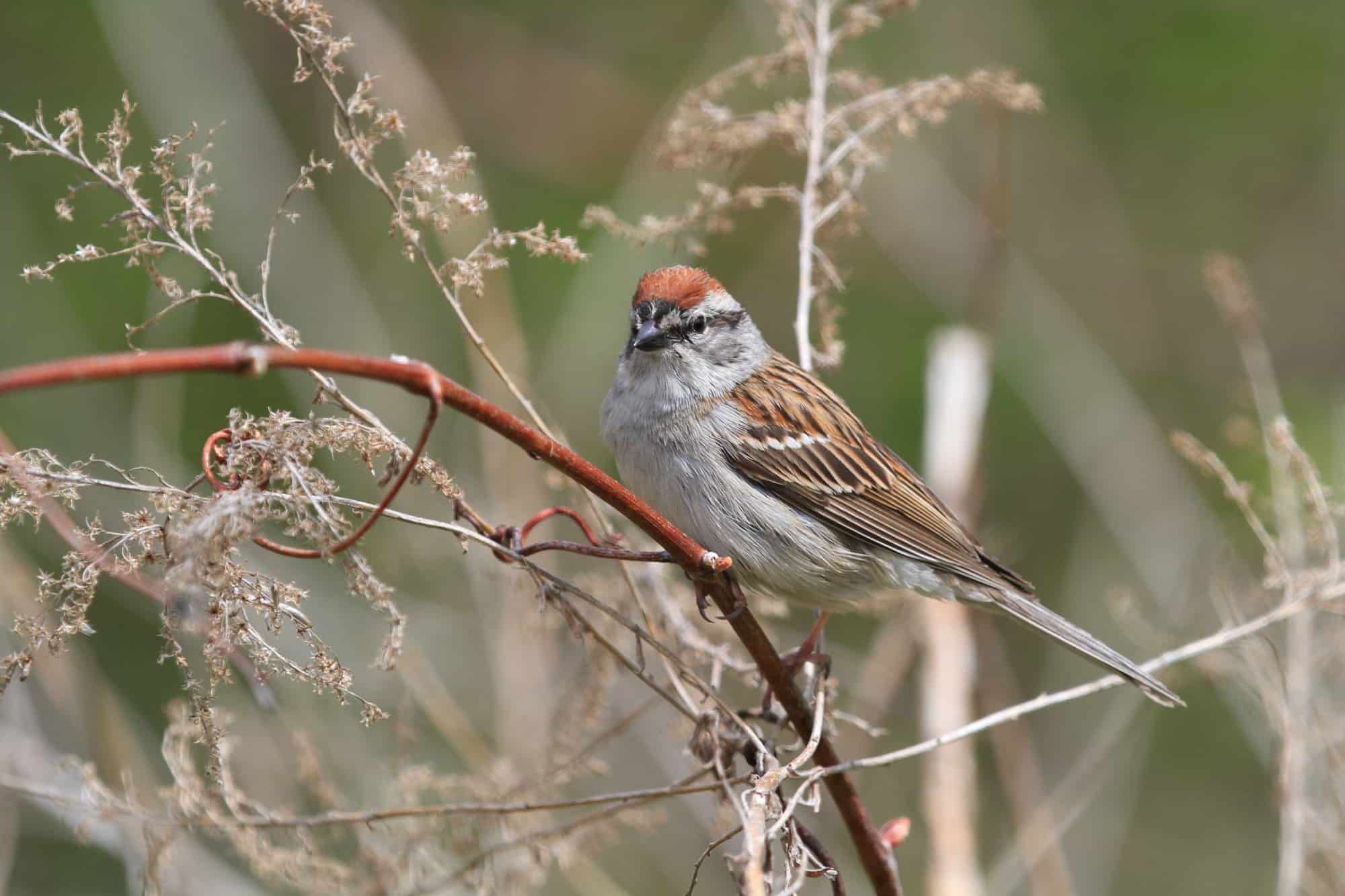
- Scientific Name: Spizella passerina
- Length: 4.7-5.9 in
- Weight: 0.4-0.6 oz
- Wingspan: 8.3 in
Chipping sparrows are endearing, medium sized-sparrows that can be quite tame and unafraid of human contact. Their lovely trills have all the power to brighten a somber mood.
Seen slightly more often in California during the summer than in winter, they are here year-round but are a less frequent sight than in many other states.
Rufous-crowned Sparrow
- Scientific Name: Aimophila ruficeps
- Length: 5.9-6.3 in
- Weight: 0.6-0.7 oz
- Wingspan: 7.75 inches
Rufous-crowned sparrows are not a very widespread sparrow and their populations in California are confined to the southwest where they reside all year.
Preferring rocky, brushy habitats, these birds build their nests on the ground from dried grass and twigs. If a predator approaches, one of the parents will feign an injury in an attempt to distract the potential threat from its nest!
This long-legged species is awkward in flight and often gets about simply by hopping on the ground.
White-throated Sparrow
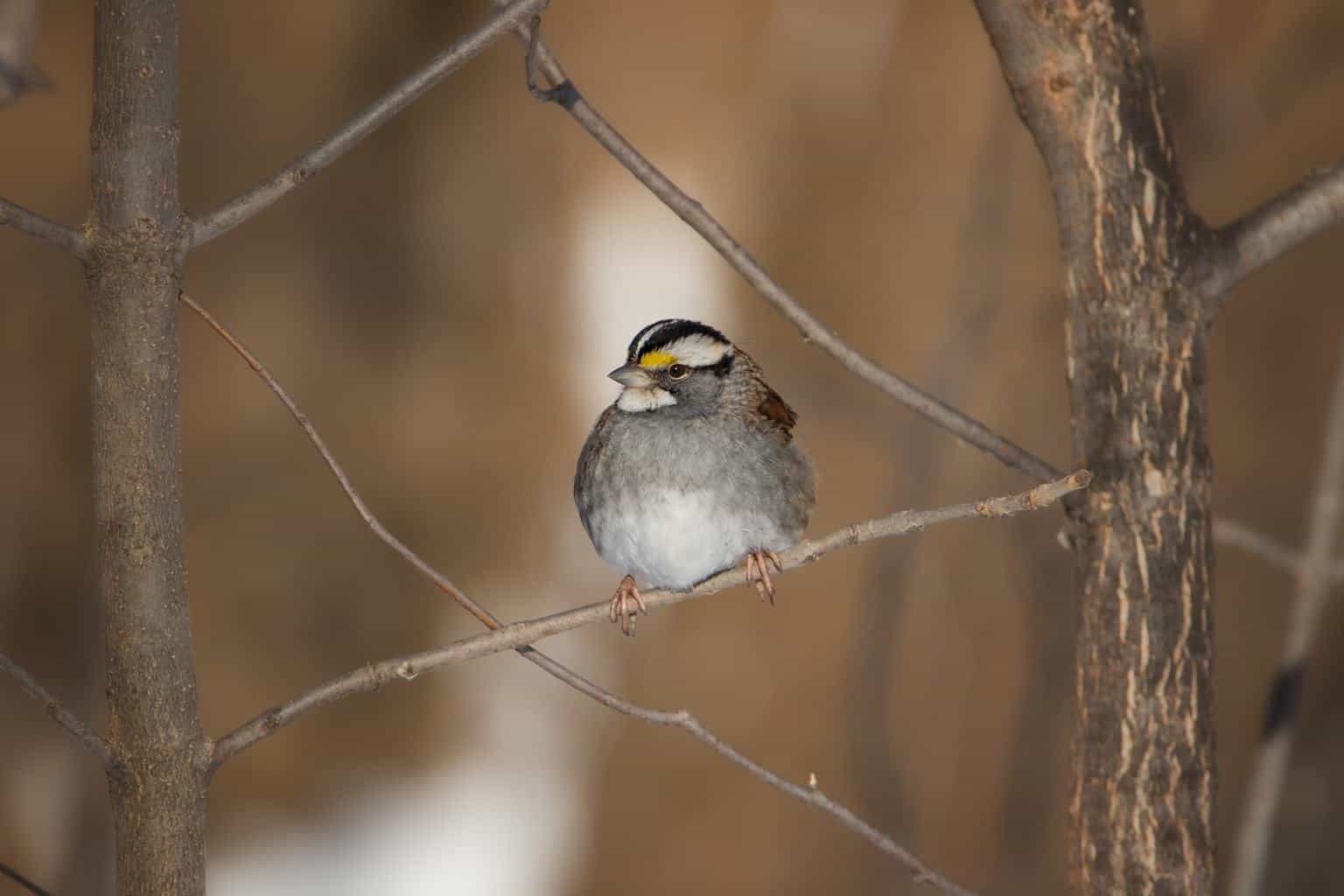
- Scientific Name: Zonotrichia albicollis
- Length: 6.3-7.1 in
- Weight: 0.8-1.1 oz
- Wingspan: 7.9-9.1 in
White-throated sparrows are aptly named for the white plumage under their chin. Their other defining features are the bold black and white (or brown) stripes across their crown and their yellow eyebrows.
These winter birds also have a distinctive high-pitched whistling song that’s easy to learn. A rare, but easily recognizable sparrow in California!
Bell’s Sparrow
- Scientific Name: Artemisiospiza belli
- Length: 6.25 in
- Weight: 0.7 oz
- Wingspan: 8.25 in
Bell’s sparrow was once thought to be the same species as the sagebrush sparrow, and was previously called the ‘sage sparrow’. Since 2014, scientists have recognized these as two distinct species.
Like its cousin, it enjoys spending most of its time in arid sagebrush habitats, where it hunts for insects and forages for grass seeds.
Green-tailed Towhee
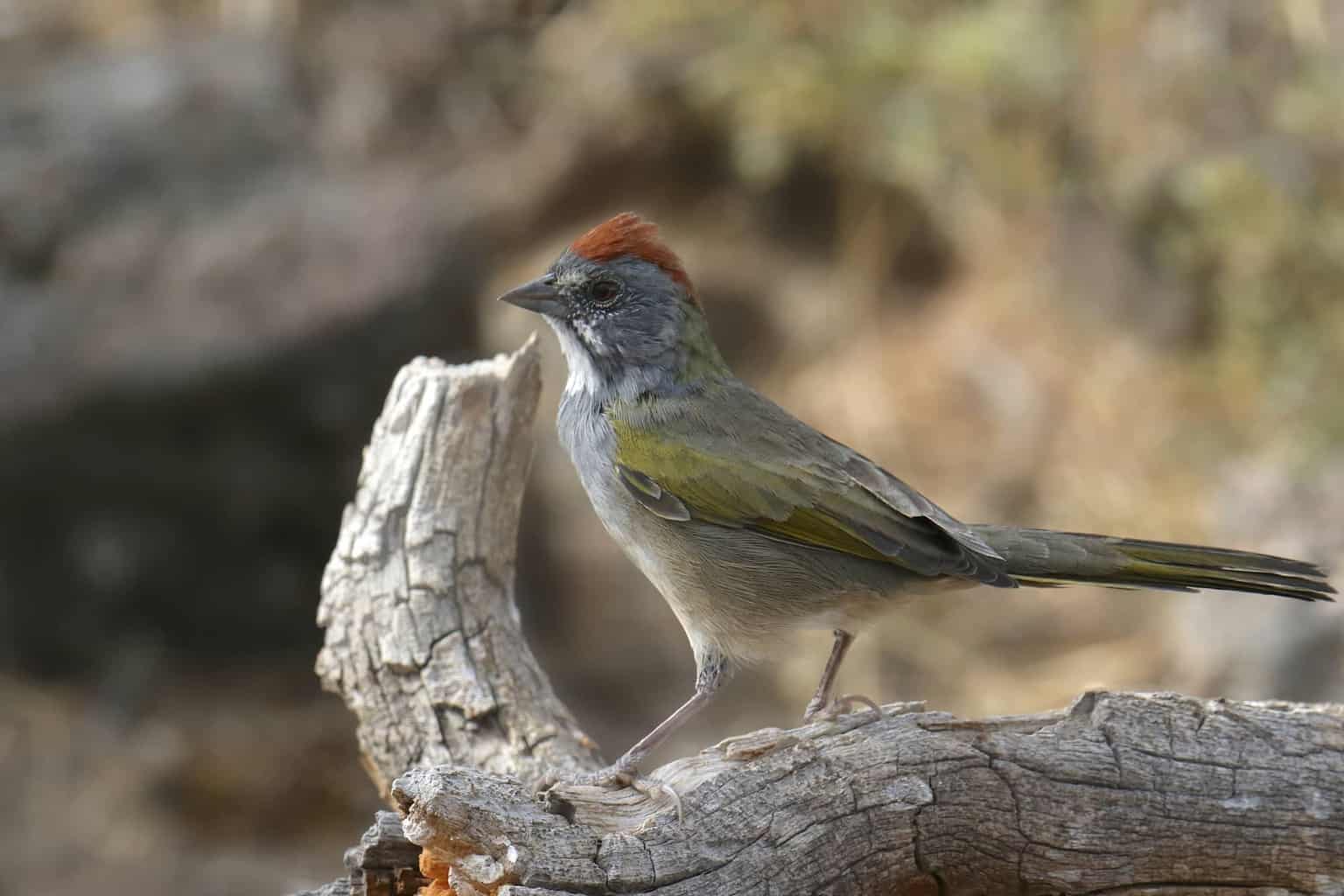
- Scientific Name: Pipilo chlorurus
- Length: 7.25 in
- Weight: 0.8-1.4 oz
The exotic-looking green-tailed towhee is a pretty bird with green-tinted feathers on its wings and back and rusty-red crown feathers. They are mostly summer residents in California, but there’s a small chance you could spot them here in the winter too.
Their calm, lilting song interspersed with silence is very soothing to listen to if you’re lucky enough to get within earshot of this uncommon bird.
Brewer’s Sparrow
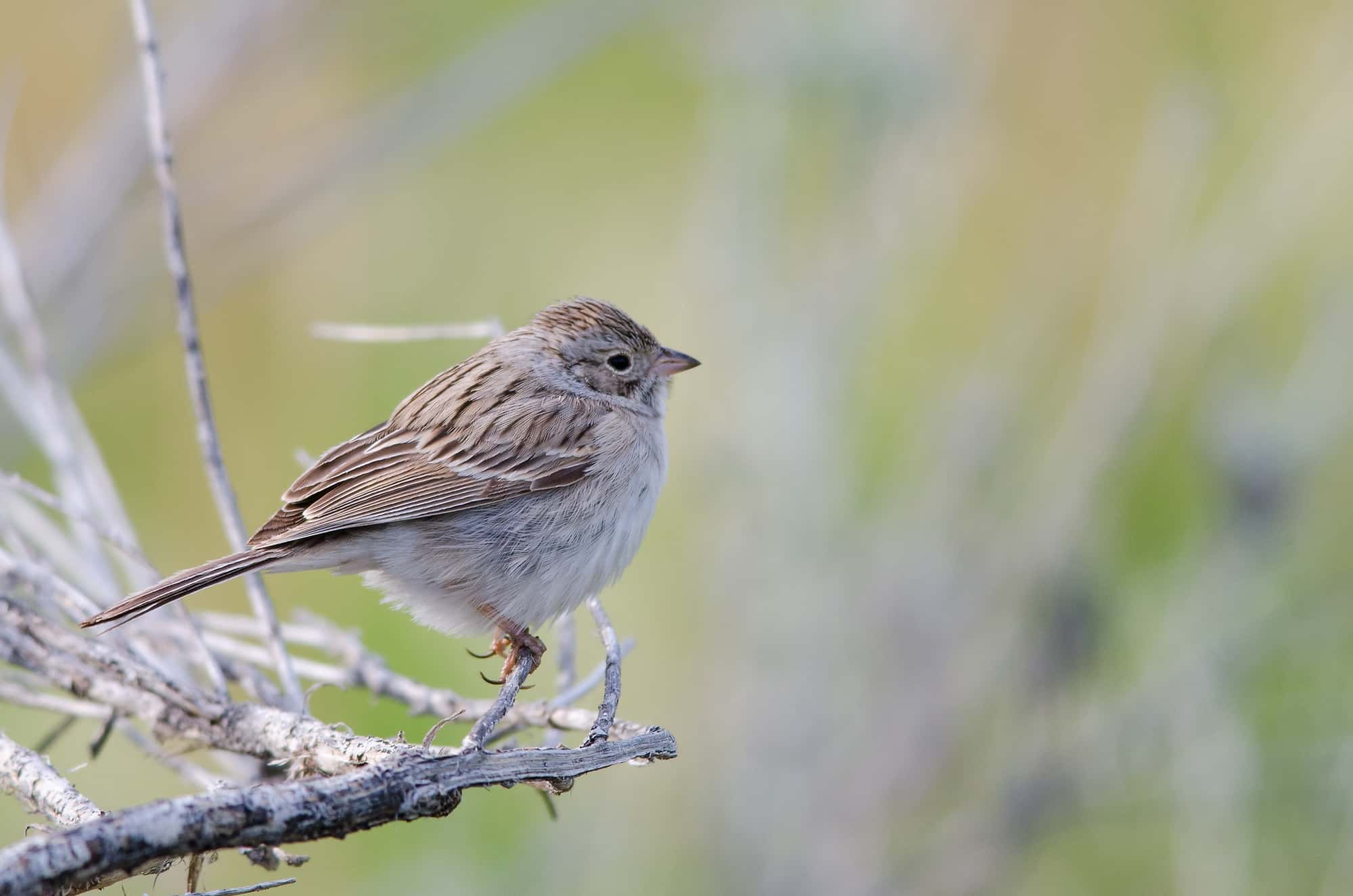
- Scientific Name: Spizella breweri
- Length: 5.1-5.9 in
- Weight: 0.4-0.5 oz
- Wingspan: 7.1-7.9 in
With a wingspan of only around 7.5 inches across, Brewer’s sparrows hold the title of being the most diminutive sparrow in North America.
Although they are common in other parts of the continent, they are a rare species in California, where they will sometimes come to breed, but rarely stay over winter.
Vesper Sparrow
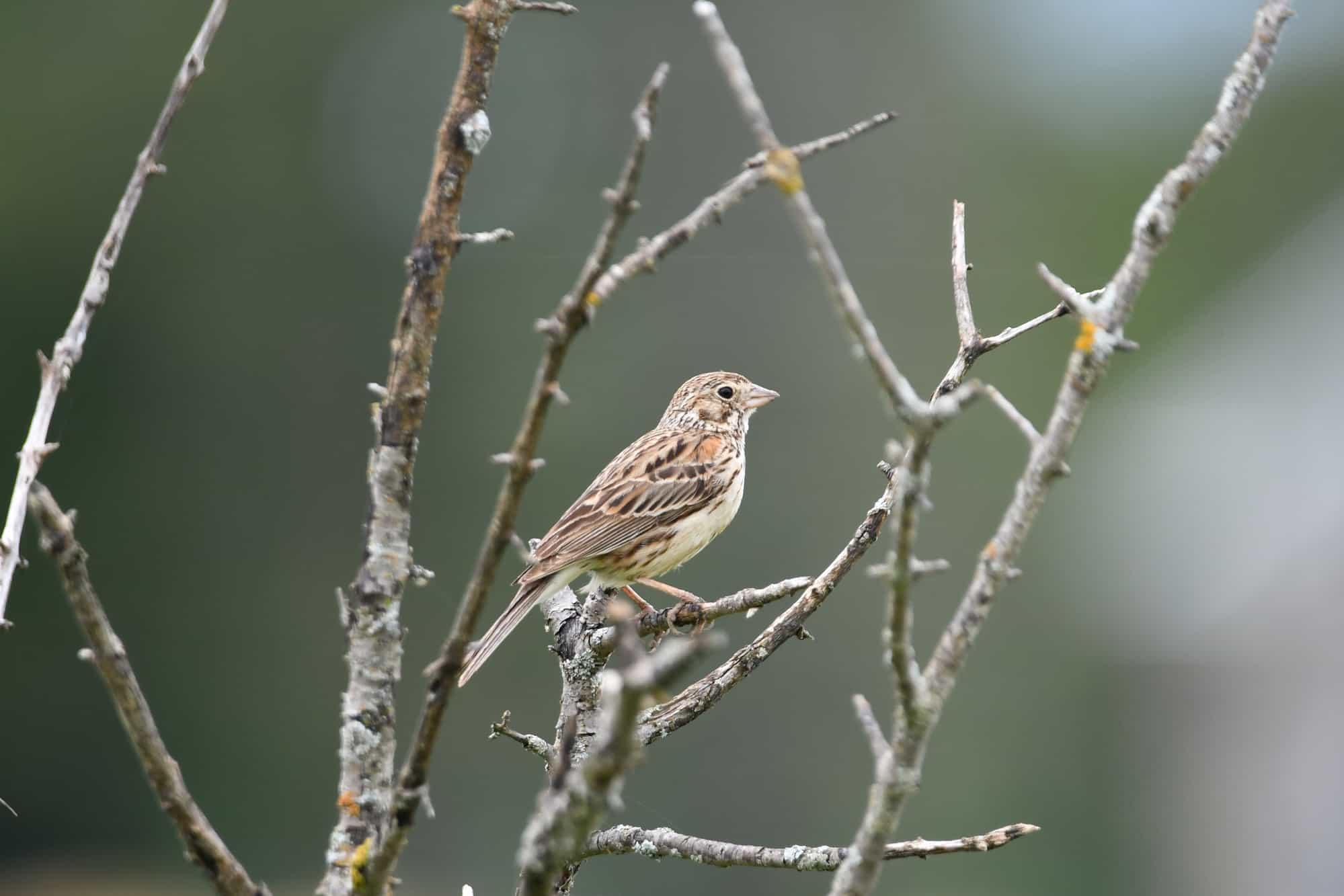
- Scientific Name: Pooecetes gramineus
- Length: 5.1-6.3 in
- Weight: 0.7-1.0 oz
- Wingspan: 9.4 in
Vesper sparrows are a rather rare sight in California, and you’re more likely to see them in the winter than in the summer.
These plain-looking sparrows are not the easiest bird to identify by sight, but they have a pleasant, melodious song that you can use to recognize them if they’re in the area.
Black-throated Sparrow

- Scientific Name: Amphispiza bilineata
- Length: 4.7-5.5 in (12-14 cm)
- Weight: 0.4-0.5 oz (11-15 g)
- Wingspan: 7.7 in (19.5 cm)
Black-throated sparrows are mostly seen in California during the spring migration, but a few spend the entire year in the south of the state.
Another bird of desert scrub and rocky landscapes, you might hear the male’s almost robotic song if you’re out rock climbing or exploring one of the state’s many canyons.
Abert’s Towhee
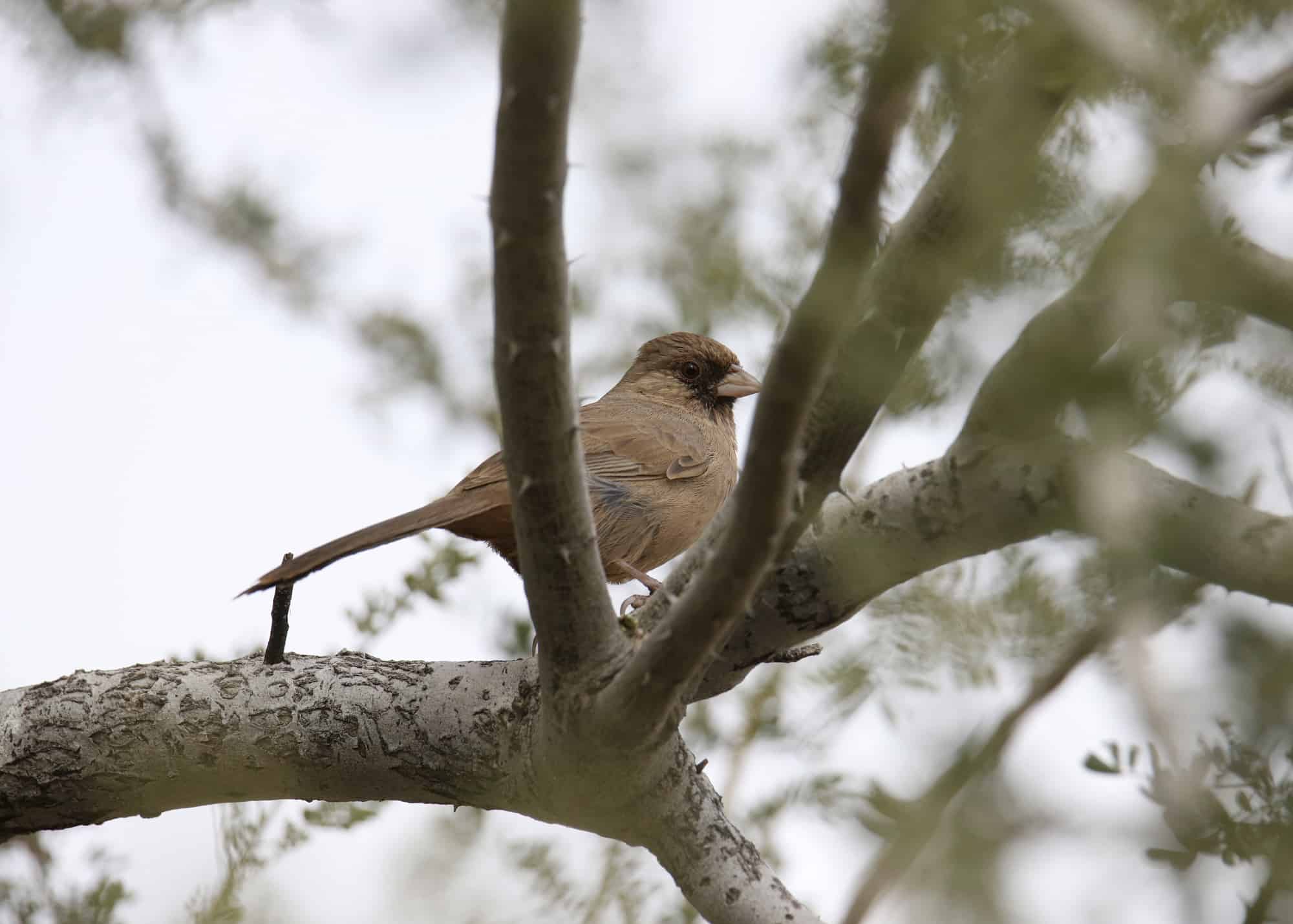
- Scientific Name: Melozone aberti
- Length: 8.3-9.1 in
- Weight: 1.5-1.9 oz
- Wingspan: 10.4-11.6 in
Abert’s Towhees may remain in California all year, but they’re still one of the least likely of sparrows for you to spot. This bird has a very specific habitat niche in desert streams and riverbeds and is more often found in Arizona than in California.
If you live in an arid area, though, you might be able to attract these large, long-tailed sparrows to your garden by offering a bird bath or garden pond – a very helpful offering for many other bird species too.
Grasshopper Sparrow
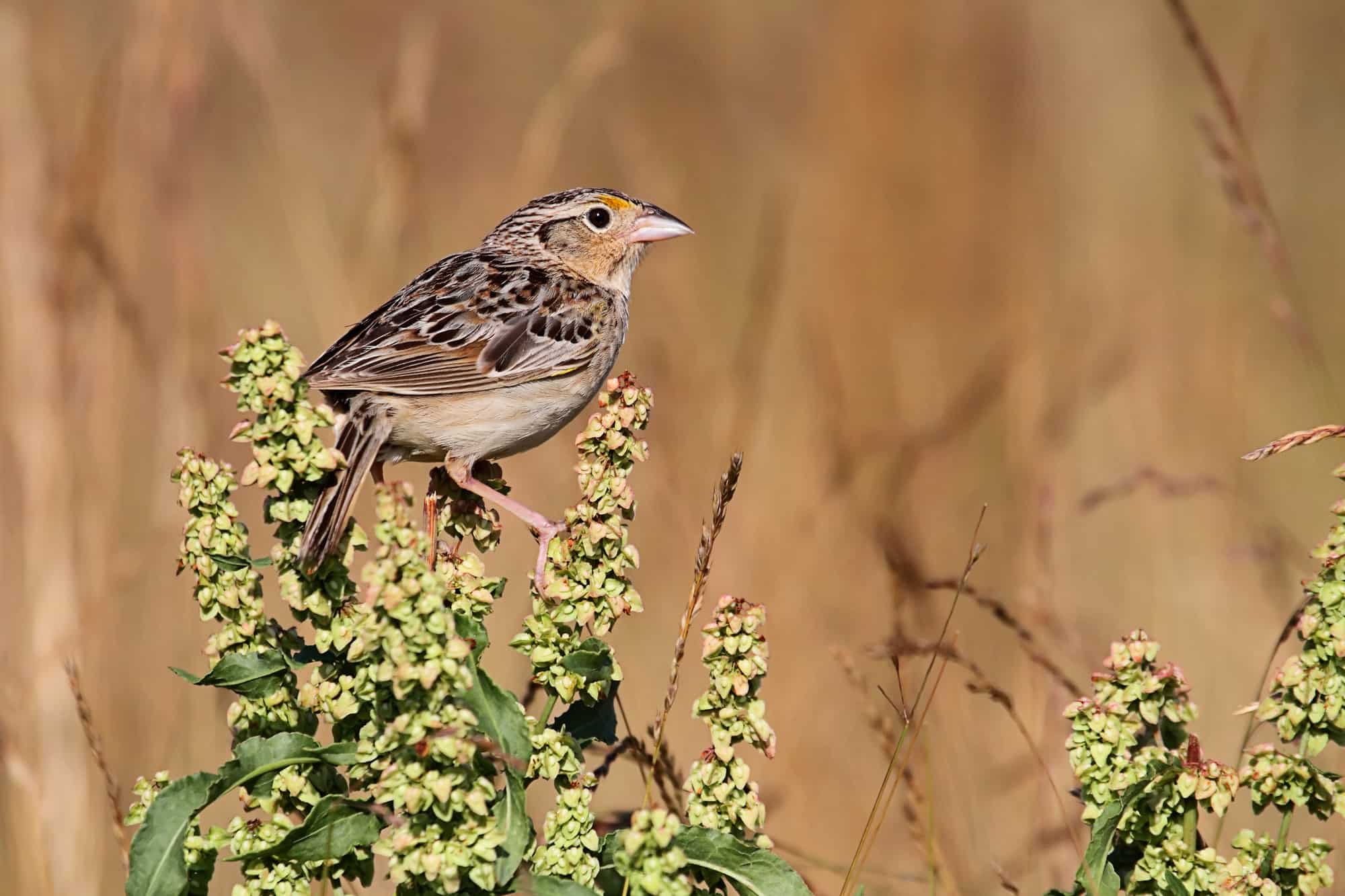
- Scientific Name: Ammodramus savannarum
- Length: 4.3-4.5 in
- Weight: 0.5-0.7 oz
- Wingspan: 7.9 in
Grasshopper sparrows are aptly named not just because their call sounds like a grasshopper, but also because they love eating grasshoppers and crickets too!
This bird of open grasslands and prairies is rarely seen near human habitation, which might be one of the reasons it’s not often reported in California. Your only real chance to see them here is between April and July when small numbers of them breed in the north of the state.
Black-chinned Sparrow
- Scientific Name: Spizella atrogularis
- Length: 5.75 in
- Weight: 0.4 oz
- Wingspan: 9 in
Black-chinned sparrows are more commonly found in Arizona and New Mexico than in California, but small localized populations can be observed in the summer months, especially in the southwest of the state.
Although it has similar plumage to the dark-eyed junco, the black-chinned sparrow is slimmer, with no white on its tail. It’s also far more specific in its habitat requirements, only residing in arid areas with scrubby vegetation.
Harris’s Sparrow
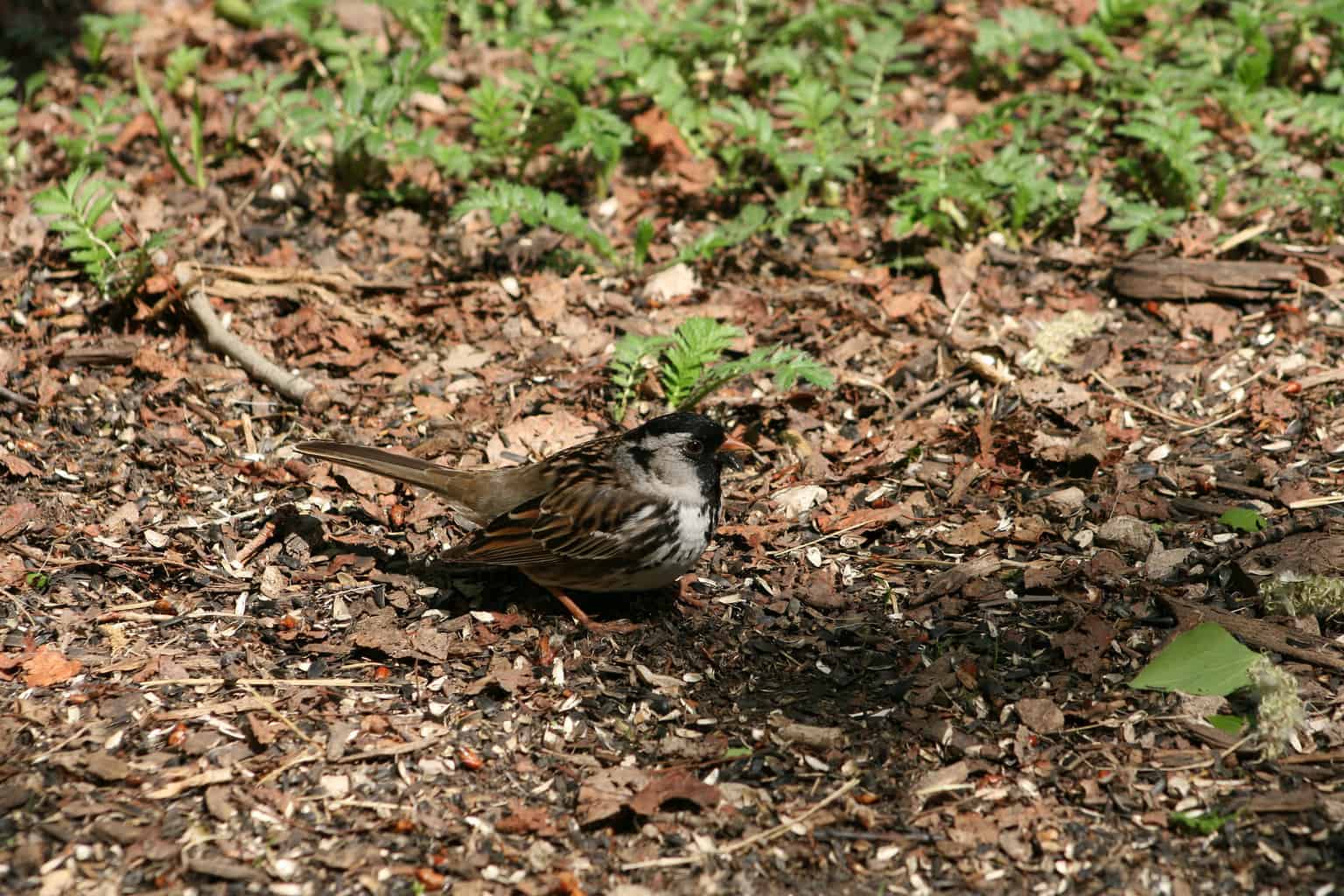
- Scientific Name: Zonotrichia querula
- Length: 6.7-7.9 in
- Weight: 0.9-1.7 oz
- Wingspan: 10.6 in
Harris’s sparrow is one of the rarest sparrows in California and the species is defined as near-threatened in the United States. Despite there still being around 2 million birds in North America, numbers have been declining in recent years, perhaps due to the degradation of their boreal forest breeding grounds.
You’re much more likely to see this large, bunting-like sparrow in the Central United States during winter than out this fast out west. But if you do see one in California, you’ll be one of the lucky 0.1% of people to have reported them here!
Migratory Sparrows Passing Through California
There are a couple more sparrow species that sometimes pass through California on their migration routes but rarely stop for extended periods here.
Two of the most likely passing migrants you’ll see in the fall are the tiny clay-colored sparrow, which sounds more like a cicada than a bird, and the equally diminutive swamp sparrow, which might be seen stopping off in marshy, wetland habitats.
Conclusion
There are more than twenty species of sparrow that live in California during some part of the year.
From the big, colorful spotted towhees, to the tiniest Brewer’s sparrows, this diverse group of birds are not just little brown jobs, but a wonderfully diverse family that can be found in just about every habitat imaginable.
To discover more incredible bird species that live in California, check out our essential guide here.

